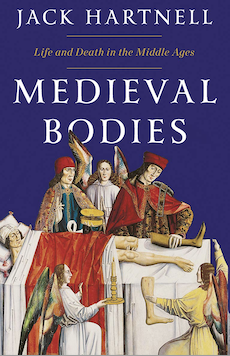|
Medieval Bodies: Life, Death and Art in the Middle Ages
By Jack Hartnell Published in November 2019 352 Pages Thibault’s Score: 4/5 Medieval Bodies is a fantastic dive into the evolution of medicine in the Middle Ages. The book covers the period from roughly 800 AD until 1500 AD. It is organized very cleverly, starting with the head, moving down all the way to the feet. One major problem comes with writing broad survey histories of a large period like the Middle Ages: the incredible diversity of opinion across time and space makes covering the topics very difficult. Hartnell adeptly deals with this problem, constantly reminding the reader that the perspectives of Aachen in Charlemagne’s time would vary greatly from the perspective of a doctor in Mamluk Egypt. The big takeaway is this: medieval medicine worked pretty well. Compared to the medicine of antiquity, there was significant progress. Our medicine is still very embryonic - we do not have a good understanding or cures for conditions like cancer, MS, or blindness. And yet, we take solace in the fact that our medicine is still progressing. People in the Middle Ages had complex mental models that they had come up with to explain why things work the way they do. For example, they believed that humors acted as chemical systems regulating and controlling different functions. When a treatment worked, they came up with an explanation that matched their mental model - for example, if an herb relieved a stomach ache, they would explain it as a calming of the humor. Many of these models would later be proven wrong, despite significant practical evidence that they worked. This, of course, begs the question: how do we know that our own explicative models might be incorrect despite the presence of significant empirical evidence. Another fascinating insight I had was the degree to which medicine did not exist as a distinct practice. Instead, it was part of a broader body of philosophy. The edges between physics, theology, medicine, butchery, and quackery were non-existent. The concept of “scientific” medicine is a blurry concept. In many ways, a healer who practices their art by trial and error broadly embodies the scientific principle: they are testing different treatments, recording the ones that do and don’t work, and attempting to improve their practice based off of this. The only difference is that modern science is more rigorous in terms of how the tests are carried out. This is an excellent, and extremely thought provoking book. I recommend it to anyone interested in the history of science, the middle ages, or medicine.
0 Comments
Leave a Reply. |
Thibault SerletMost of my articles are book reviews, but I also write about many other topics. Archives
December 2023
Categories |

 RSS Feed
RSS Feed